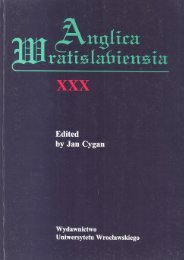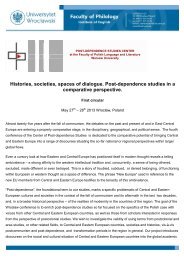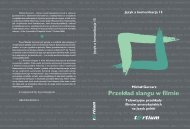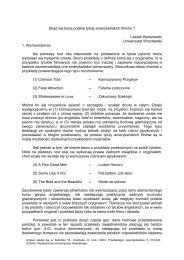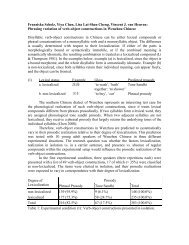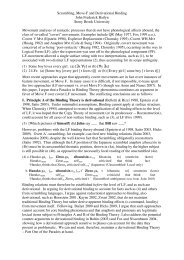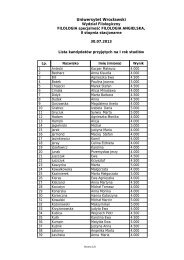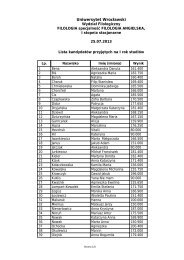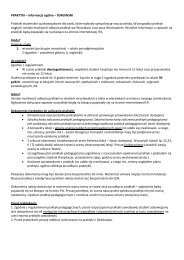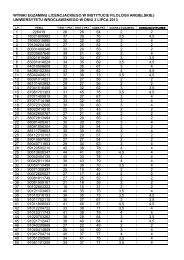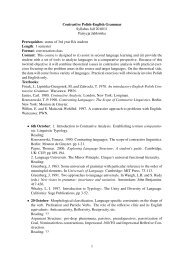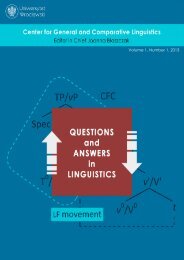Academic Journal Modern Philology
Academic Journal Modern Philology
Academic Journal Modern Philology
Create successful ePaper yourself
Turn your PDF publications into a flip-book with our unique Google optimized e-Paper software.
Non-formal Elements in <strong>Academic</strong> Translator Education<br />
educational framework. Apart from explaining why, the author demonstrates how to expand the formal<br />
framework; in other words how to implement empowerment beyond the formal classroom. In an attempt<br />
to provide the reason for expanding the formal framework of translator education, the author refers to<br />
three concepts that recur in the debate in the field of adult education: autonomous learning, heutagogy<br />
and non-formal learning.<br />
35<br />
Autonomous learning<br />
González Davies (2004: 14) enumerates “three main approaches to the learning process”: the<br />
transmissionist, transactional and transformational educational styles. Since the first and the last approach<br />
have been discussed above, the author confines himself to a short presentation of the transactional model,<br />
which is defined by González Davies (ibid.) as “based on cooperative learning, there is group work and<br />
interaction, but the teacher still has the final answer to the problems set in the activities.” In González<br />
Davies’ view, this approach marks a transition stage between the transmissionist and the transformative<br />
position.<br />
Grow (1991: 129 ff.) also maintains that learning cannot be governed by only one educational<br />
strategy and that learning styles change in time. The stages that a learner can go through are presented<br />
below:<br />
Table 1. Four stages of learning by Grow (1991).<br />
Stage Student Teacher<br />
Dependence Relies on teacher for the choice of content Chooses content, elicits results, evaluates<br />
and methods<br />
Interest Seeks answers Motivates, inspires, leads to enthusiastic<br />
excitement with learning<br />
Engagement Learns through own work Encourages and supports students’ work,<br />
they both seek knowledge in cooperation<br />
Autonomy Learns mostly through organizing and<br />
realizing objectives that they planned for<br />
themselves<br />
Consults, shows direction, gives advice<br />
Although González Davies (2004) presents the three approaches as “teaching styles”, and Grow<br />
(1991) talks about “learning styles”, one could observe obvious parallels between these two perspectives.<br />
Firstly, they accept the fact that learning and teaching must adapt to a given stage in the learner’s<br />
development. Secondly, both authors stress the transition that the learner and the teacher can experience<br />
in the classroom (and beyond). It is true that the transactional approach in González Davies (2004) and<br />
the interest stage in Grow (1991) do not necessarily match in a one-to-one fashion. At the same time,<br />
the assumption that there can be a reasonable degree of overlap between the two is viable. However,<br />
the main point that makes González Davies’ continuum distinct from Grow’s is the stage of autonomy,<br />
which is proposed only by the latter author. This difference is obvious in view of the fact that autonomy<br />
concerns learning rather than teaching. In fact, autonomy as a learning style is a necessary prerequisite for<br />
the engaged or transformative stage in learning or teaching.



